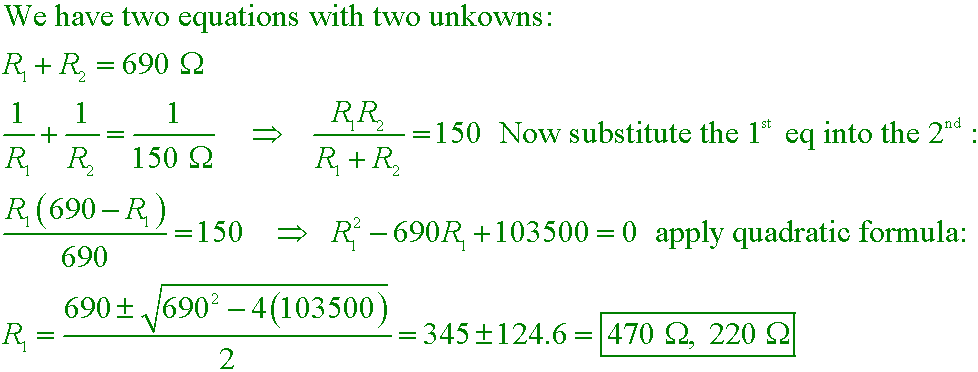Summary
- Capacitance
- Resistance
- Ohm's Law
- Lame physics joke of the day

- Electric power
- alternating current (ch. 24)
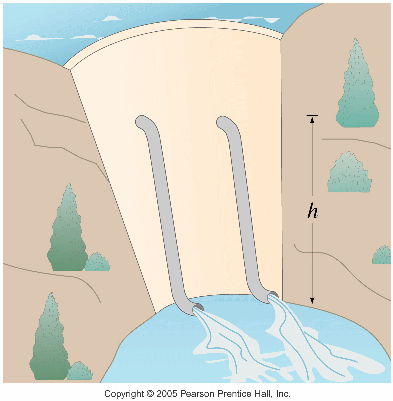
- DC circuits
- Simulate any circuit!
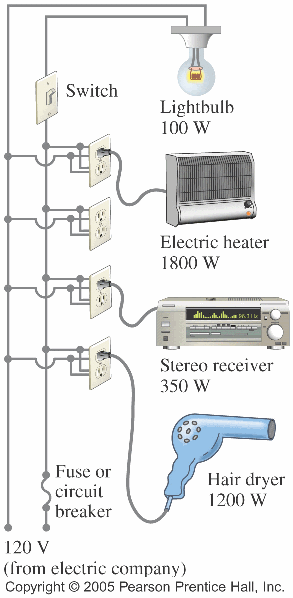
- Voltage is like height applet
- Circuit animation video
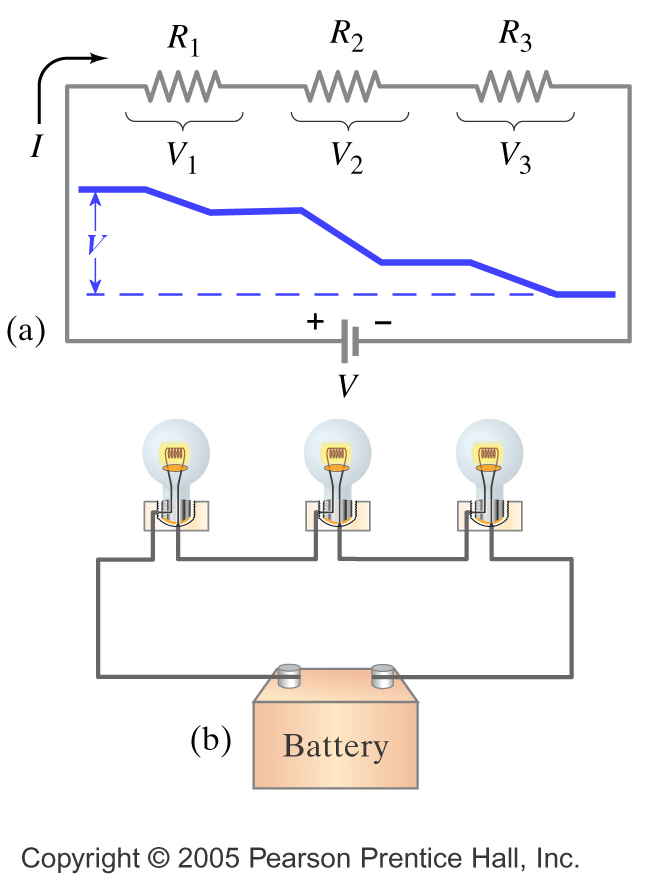
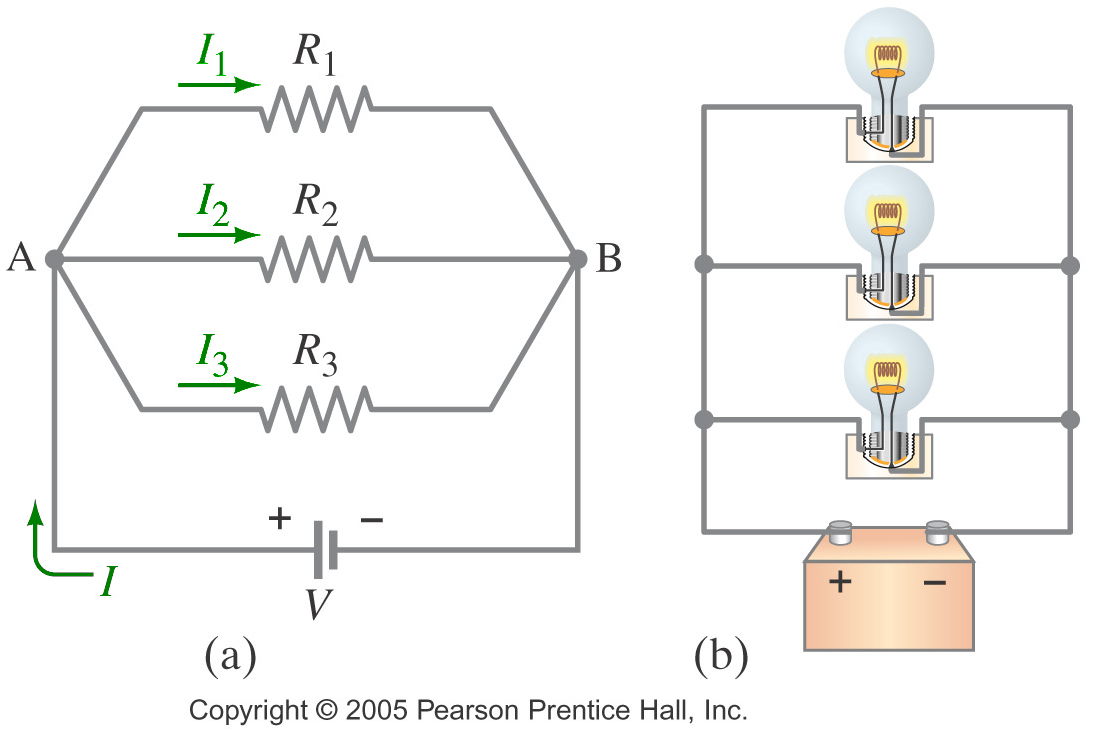
- Lecture learning outcomes
A student who masters the topics in this lecture will be able to:
- explain electrical power in terms of the conversion of electric potential energy to thermal energy
- calculate electric power using any of three appropriate combinations of voltage, current, and resistance
- calculate the energy delivered to a circuit in terms of the kilowatt-hour (kWh) unit
- describe the basic features of series and parallel connections of circuit elements
- calculate the equivalent resistance of series and parallel combinations of resistors
Practice:
Try these additional examples
Example #6
Example #7
Example #8
(Challenging) Example #9
Prepare:
Read textbook section 21-5 before the next lecture
kw4
How much current will a 50-W light bulb draw from a 12-V battery?
A. 0.24 A
B. 4.17 A
C. 12 A
D. 600 A
Answer
kw4
What power does a TV require if it draws 150 mA from the 120-V outlet?
A. 0.80 W
B. 1.25 W
C. 18 W
D. 18 kW
Answer
kw4
At a price of $0.080/kWh, what does it cost to leave a 100-W security light on during a 10 hour night?
A. $8.00
B. $0.80
C. $0.08
D. $0.008
Answer
sj6 28.8
A 75-W @ 120 V lamp is connected to an extension cord with two wires of 0.800 Ω each. What power is
actually delivered to the lamp?
A. 75.0 W
B. 74.5 W
C. 73.8 W
D. 72.2 W
Answer
sj6 28.6
In Fig. P28.6, what is the current through the 7.00-Ω resistor if
ΔVab = 34.0 V?

A. 0.835 A
B. 1.17 A
C. 1.74 A
D. 7.72 A
Answer
gc6 18.8
A 9.0-V battery is connected to a bulb whose resistance is 1.6 Ω. How many electrons leave the battery per second?
A. 5.62 e/s
B. 337 e/s
C. 9.00×1019 e/s
D. 3.52×1019 e/s
Answer
Walker5e 21.37
A 9.00-V battery is connected across the terminals A and B for the group of resistors shown. What is the
potential difference across the 82-Ω resistor?

A. 6.31 V
B. 4.50 V
C. 8.20 V
D. 2.69 V
Answer
klm
Design a voltage divider that would provide one-fifth (0.20) of the battery voltage across R2.
What is the ratio R1 / R2? [Hint: Set the voltage drop across R2
equal to one-fifth of the battery voltage 0.20 × I(R1 + R2) and rearrange your
expression to find the ratio.]
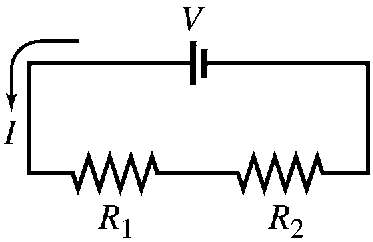
A. 5/4
B. 4/5
C. 5
D. 4
Answer
sj6 28.16
Two resistors have Reff = 690 Ω in series and 150 Ω
in parallel. What are their values?
A. 180 Ω, 320 Ω
B. 250 Ω, 250 Ω
C. 136 Ω, 722 Ω
D. 220 Ω, 470 Ω
Answer
B. 4.17 A

C. 18 W

C. $0.08

C. 73.8 W
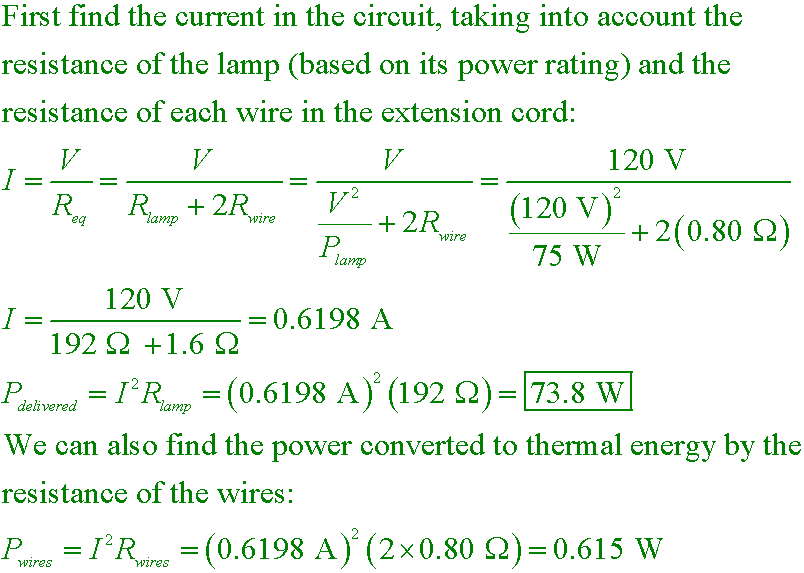
B. 1.17 A
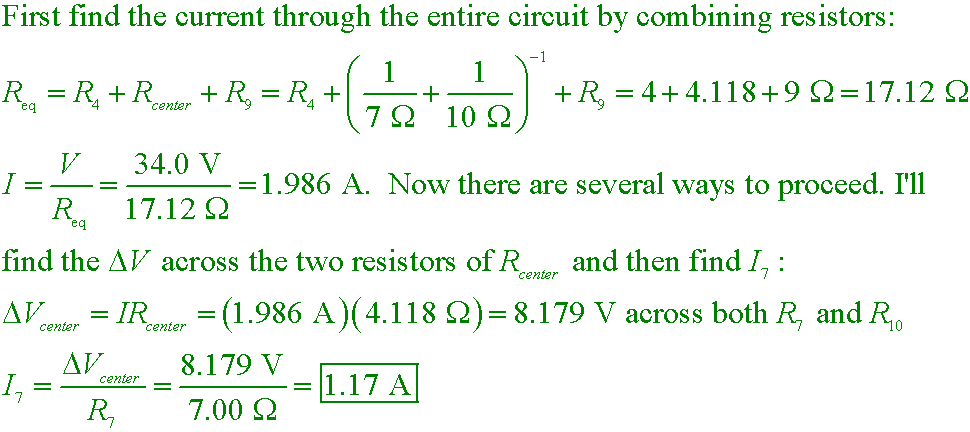
D. 3.52×1019 e/s
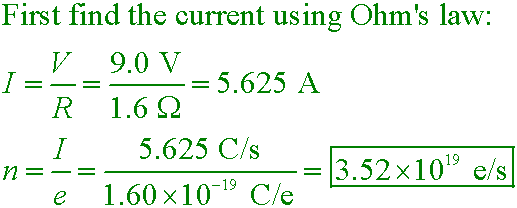

A. 6.31 V
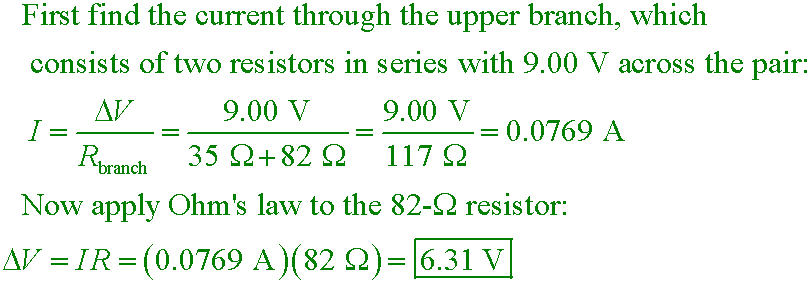
D. 4

Hence any arrangement where R1 is four times bigger than R2 will work. For instance, if V = 10 V, R1 = 40 Ω, and R2 = 10 Ω, then the current in the circuit will be (10 V)/(50 Ω) = 0.20 A, and the voltage drop across R2 will be IR = (0.20 A)(10 Ω) = 2.0 V, or one-fifth the battery voltage.
D. 220 Ω, 470 Ω
